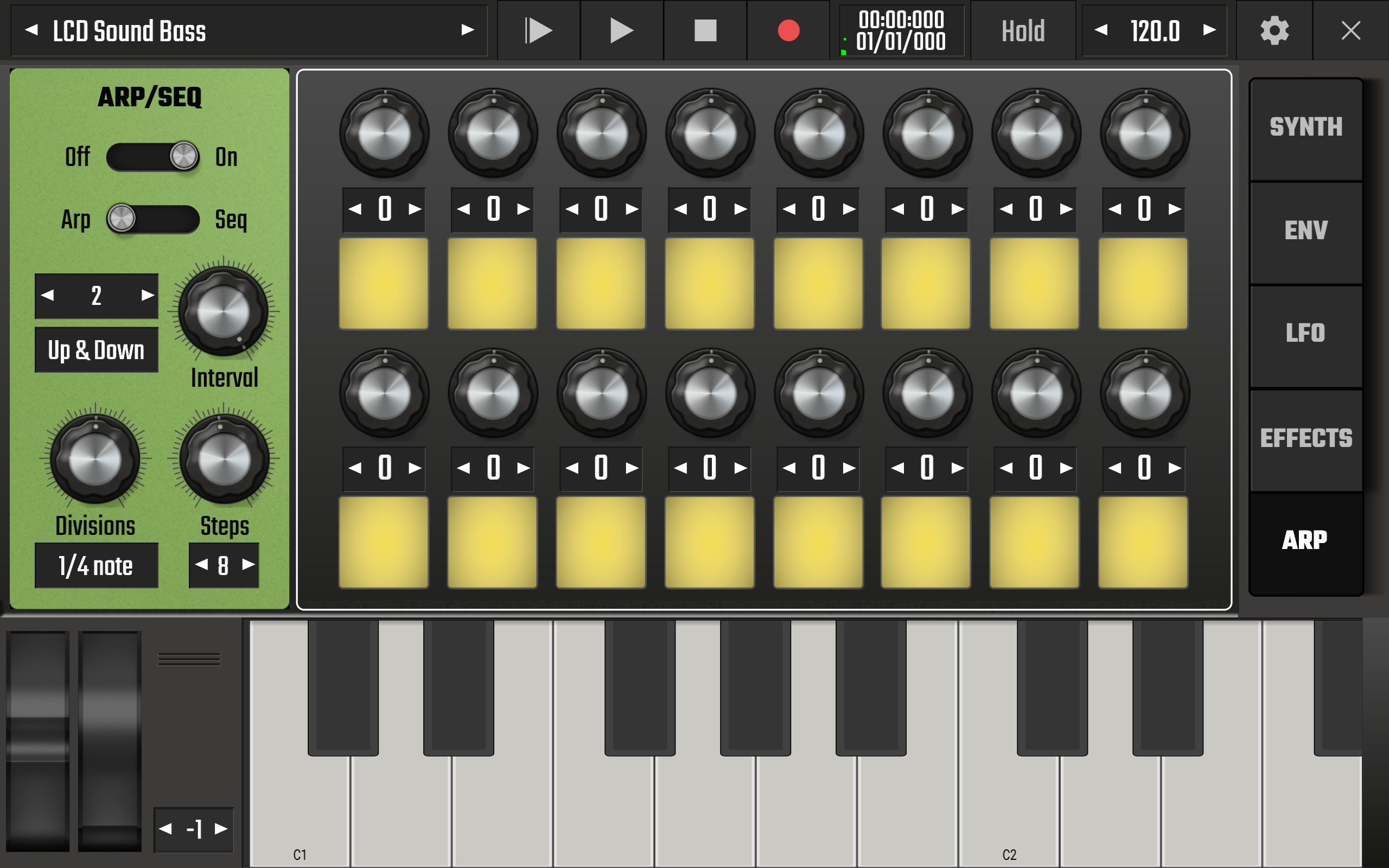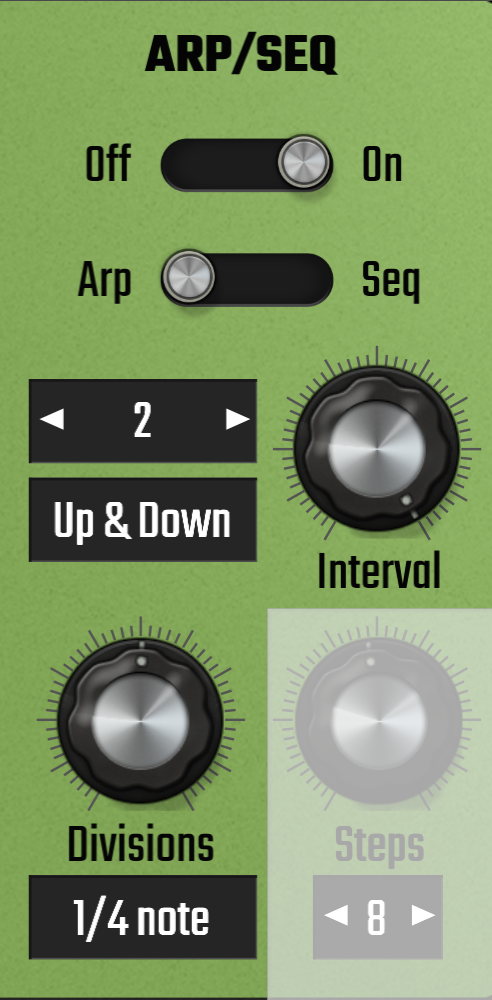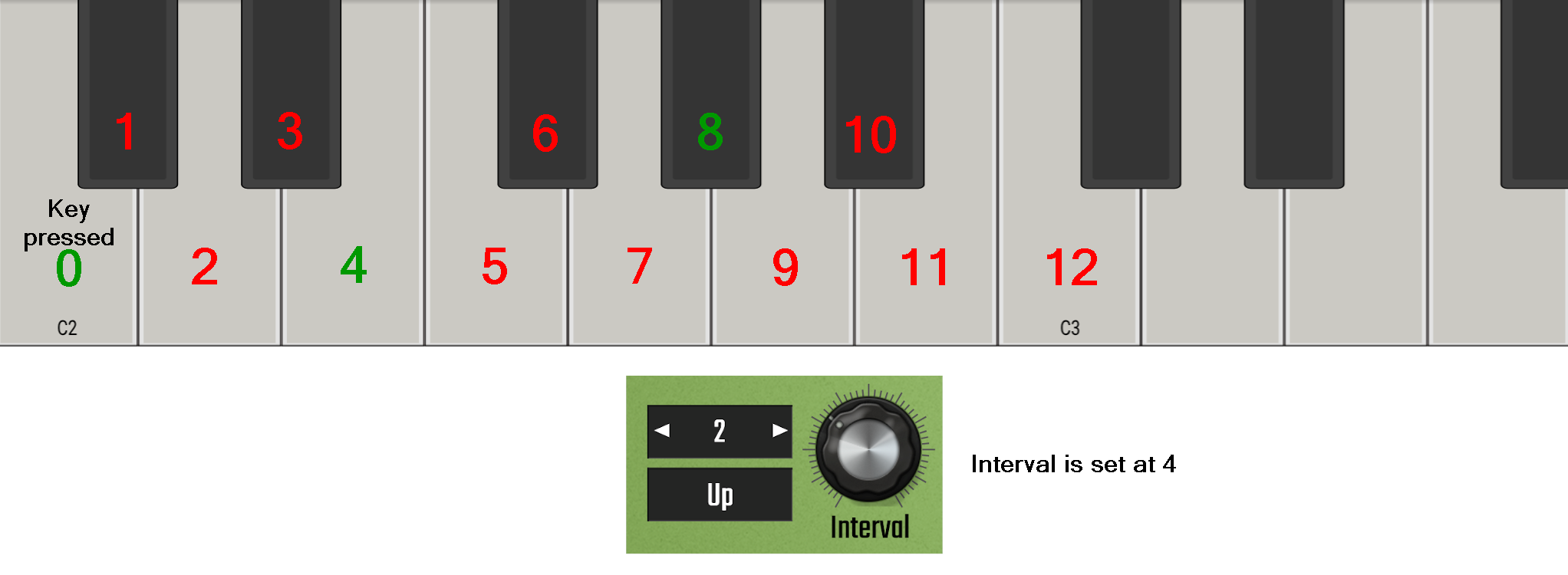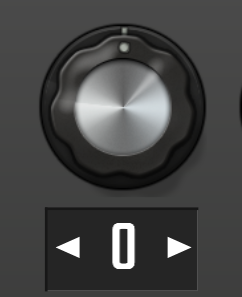The Arp Page

The Evolution One Arp Page allows you to access two automated ways of the synth playing your sound once a key is pressed and held: an Arpeggiator and a Sequencer.The first time you open Evolution One, the Synthwave 1974 preset will be loaded. When you press and hold a key you'll notice it repeatedly plays a sequence of notes using the key pressed as its starting point: this is the Sequencer in action. If you load the LCD Sound Bass preset from the same preset bank, you'll hear the Arpeggiator being used. Both can be very useful whenever you want a pulsing, rhythmic motif in your music, but they can also be used slowly to achieve a sound that evolves over a long time for a very different effect.
Use these quick links to jump to a section.
The Arpeggiator

A group of notes played at the same time is called a chord. If those notes are played separately, one after the other, up or down, the performer is playing an arpeggio. An Arpeggiator, or Arp, automates this process so that the performer can hold down a single keyboard key (or trigger a single note on the piano roll) and the synth will repeatedly play an arpeggio - a group of notes, one after the other - until the note event ends.
Use the On/Off switch to turn the Arp/Seq on and off.
Use the Arp/Seq switch to select either the Arp or the Sequencer.
On the next row down, this display ![]() shows the number of notes (or steps) in the arpeggio not including the root note (the key pressed or note on the piano roll). Use the arrow buttons to select from 0 to 3.
shows the number of notes (or steps) in the arpeggio not including the root note (the key pressed or note on the piano roll). Use the arrow buttons to select from 0 to 3.
Below that, this display ![]() shows whether the arpeggio is played upwards, downwards or upwards and downwards in pitch. Tap the display to select between Up, Up and Down and Down.
shows whether the arpeggio is played upwards, downwards or upwards and downwards in pitch. Tap the display to select between Up, Up and Down and Down.
The Interval dial selects the musical intervals between the notes played in the arpeggio. It ranges from 0 (the note triggered) to 12 semitones. The number of semitones is shown in the synth Playback Timer display as the Interval dial is moved. Here is an example.

In this example, the Interval dial is set at 4, the arpeggio has 2 steps (not including the note triggered) and the direction of the arpeggio is Up. So, the Arp sounds as follows 0, 4, 8, 0, 4, 8, 0, 4, 8... or C2, E2, G#2, C2, E2, G#2, C2, E2, G#2... Starting from the note triggered, you count up the number of semitones defined by the interval, and then again from that note by the same amount and so on depending on the number of steps in your arpeggio.
If the direction of the arpeggio was set to Up and Down in the above example, the Arp would sound like this - 0, 4, 8, 4, 0, 4, 8, 4, 0... or C2, E2, G#2, E2, C2, E2, G#2, E2, C2...
And if the direction was set to Down, the Arp would sound like this 8, 4, 0, 8, 4, 0, 8, 4, 0... or G#2, E2, C2, G#2, E2, C2, G#2, E2, C2...
Finally in the Arp controls is the Divisions dial. This sets the duration of each note within the arpeggio. The options are all musical divisions of the current tempo, ranging from 1/64 triplet beat for each note on the dial's left to each note being 8 bars long on the dial's right. Thus, the effect of the Arp can be very different based on this setting, from a rapidly firing series of short notes to very long notes changing occasionally.
The Sequencer

The Sequencer is similar to the Arpeggiator in that it plays a series of notes, an arpeggio, one after the other repeatedly from a single note being triggered but it gives you more control over which notes are played and how many steps there are in the sequence. On the left are the dials to control the Divisions and Steps and on the right is the step Sequencer itself.
Use the On/Off switch to turn the Arp/Seq on and off.
Use the Arp/Seq switch to select either the Arp or the Sequencer.
As with the Arp, the Divisions dial is used to control the duration of each note within the sequence. The options are all musical divisions of the current tempo, ranging from 1/64 triplet beat for each note on the dial's left to each note being 8 bars long on the dial's right. Thus, like the Arp, the effect of the Sequencer can be very different based on this setting, from a rapidly firing series of short notes to very long notes changing occasionally.
The Steps dial determines how many steps, or notes, there are in the sequence before it returns to the beginning and starts again. The minimum is 1 and the maximum is 16 steps. You can also use the arrows on the numerical display to select the number of steps.
On the right is the step Sequencer itself. This area allows you to select the notes heard in your sequence and turn any individual step on or off. In the screenshot above, the sequencer has 16 steps before it repeats and each step has 1/4 note length as can be seen from the Divisions and Steps settings. On the right a Major scale sequence of note intervals, first up, then down, has been defined in semitone intervals through the course of the steps and every other step has been turned off meaning they won't be heard.
The step interval selector dial  allows you to define the semitone interval of that step. It can be set from -24 to +24 semitones where 0 always represents the note triggered. You can use the dial or the arrows on the numerical display to select the semitone interval for that step.
allows you to define the semitone interval of that step. It can be set from -24 to +24 semitones where 0 always represents the note triggered. You can use the dial or the arrows on the numerical display to select the semitone interval for that step.
The step status buttons allow you to turn the individual steps on and off. Yellow ![]() is on. Gray
is on. Gray ![]() is off. These allow you to give your sequence a specific rhythm as some steps are sounded (on) and others not (off).
is off. These allow you to give your sequence a specific rhythm as some steps are sounded (on) and others not (off).
NOTE. Don't forget, both the Arp and the Sequencer will playback their series of notes repeatedly while a note remains triggered. A very short note event, therefore, may not be long enough for the whole series of notes to be heard even once in its entirety. This can provide extra creative possibilities though if used cleverly.